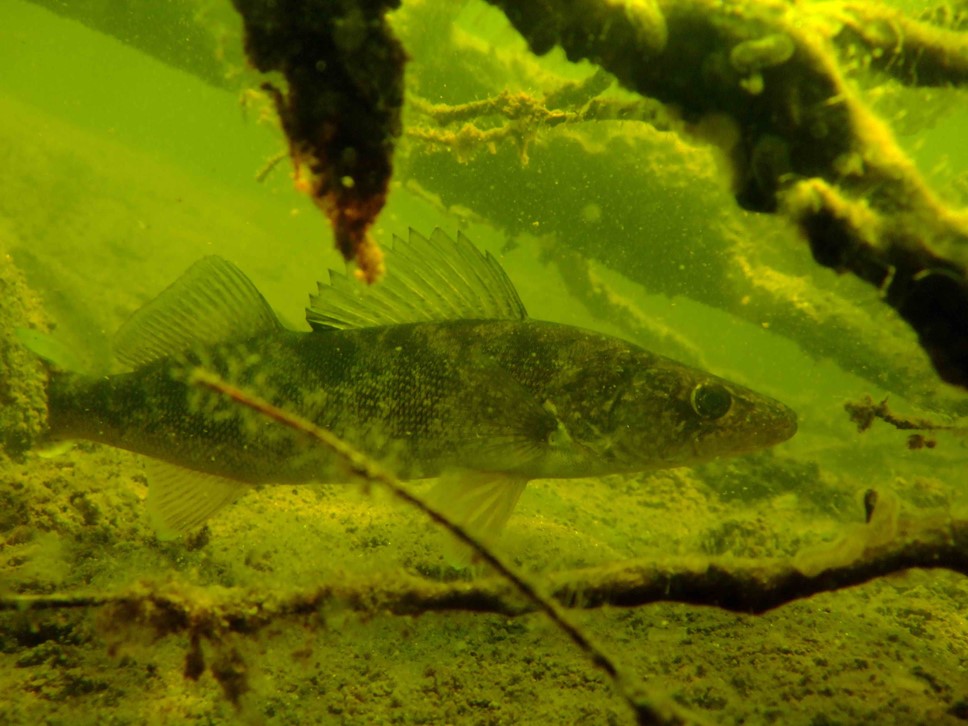Monthly Archives: January 2021
Drawdown Ecology – why can’t we just lower the lakes?
By Kevin Trimble.

Pressure is mounting in Muskoka to push water levels lower. The Muskoka River Water Management Plan (MRWMP) calls for a seasonal drawdown in fall and it makes sense that lowering levels even more will make room for bigger spring floods. Sounds simple enough, but how is lake health affected by our tinkering? Lake ecosystems are complex and chain reactions can result from one small manipulation.
The MRWMP currently includes some protection for spawning fish. But after recent spring floods, some say its worth losing some fish to protect shoreline structures.
The problem is that lake drawdown can leave eggs high and dry, causing mortality. Lake trout return to their shallow spawning grounds every year in the big Muskoka lakes. These areas have specific depths and slopes, specific rock sizes, and aeration from waves and currents that trout need for spawning.
Lake trout isn’t the only species like this. Walleye have specific shoreline or stream spawning grounds while pike and muskie need access to shoreline wetlands right after ice-out.
So what’s the big deal if we compromise some sportfish? These species are at the top of the food chain and are important parts of a complex ecological engine that maintains Muskoka’s world class environment and economy. If their numbers drop, a domino effect can occur, starting, for example, with a population explosion in their prey fish, which in turn eat more tiny zooplankton and bugs so less algae get consumed. This could alter water quality.
And its not just about the top predators. Many other aspects of the lake ecosystem are affected by artificially altering water levels. Shallow shoreline areas, or littoral zones, are the only part of a lake bed getting direct sunlight, so a lot of production happens there. There are microscopic plants and animals, wetland vegetation, insects, worms, mussels and crayfish in littoral zones. They move and store energy and nutrients, keeping the system complex and stable, preventing algae and bacteria from taking over.
One water level drawdown is a temporary flood fix, which can leave the littoral zone stranded high and dry. Doing it regularly would move the littoral zone permanently deeper in the lake, changing its slope, substrates, or currents. Either way, biological production will be affected. Artificial drawdowns can also kill or alter shoreline vegetation and wetlands which are critical to lake ecosystems. Any combination of these biological impacts could destabilize an ecosystem and lead to water quality problems, such as blue-green algae blooms.
There are also many physical and chemical processes occurring along our lakeshores. Erosion, sediment movement and nutrient storage or release are all natural processes driven by wind and wave action, freeze-thaw cycles and natural water level fluctuations. All of the physical and biological processes in our lakes have adapted to water level fluctuations to maintain the high quality environment we expect. If we knock one element out of sync, the whole system can be affected. We need to remember that lakes are not swimming pools that are easily cleaned. We could also accidentally leave summer water levels too low if we guess wrong.
If we improve our understanding of the potential domino effects (through Integrated Watershed Management) we might find that its worth the risk to tamper with drawdowns. But we already know that this won’t improve flood mitigation much, since our dams and MRWMP weren’t designed to handle floods. This will be explained in an upcoming article. If we don’t understand all of the risks, it’s like throwing a dart at a dart board while blindfolded, and the dart board is our highly valued lake environment.
Kevin Trimble is Past Chair of the Muskoka Watershed Council. He is a consultant living near Port Carling.
